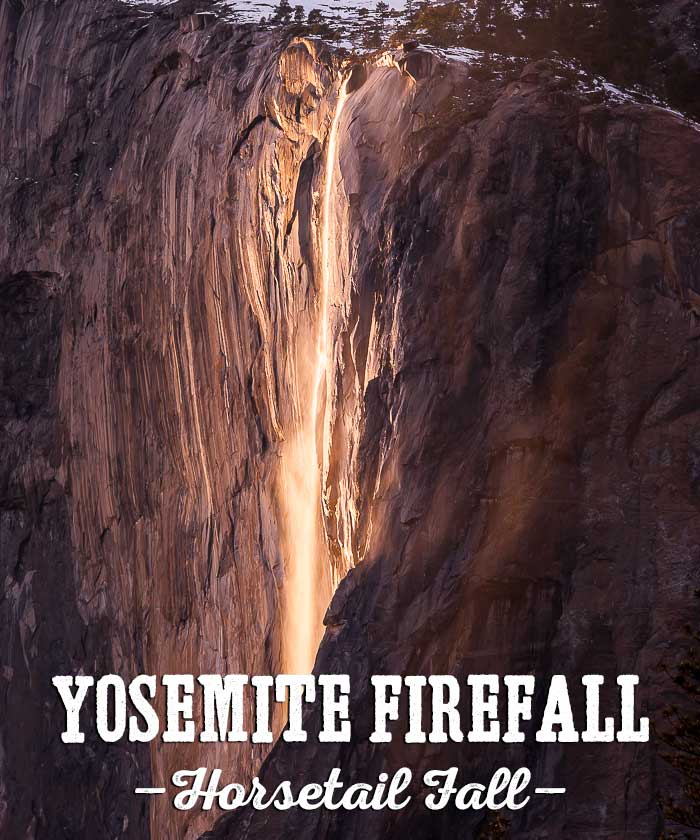
The natural Firefall at Horsetail Fall is one of the most amazing spectacles in Yosemite National Park. Around the second week of February, the setting sun hits Horsetail Fall at just the right angle to illuminate the waterfall. When conditions are perfect, Horsetail Fall glows orange and red at sunset.
New Firefall Rules
Due to the skyrocketing popularity of the Natural Firefall, which now attracts thousands of spectators, Yosemite National Park has implemented some new rules.
During the Firefall there is a restricted zone from Yosemite Valley Lodge to El Capitan Crossover. This zone offers some of the best views of Horsetail Fall. The restrictions are in place to reduce traffic jams, which have become a problem in recent years.
Horsetail Fall
Each year in late February, hundreds of spectators gather in Yosemite to witness this amazing event. But the Yosemite Firefall can be finicky. Although Horsetail Fall is visible from multiple viewpoints in Yosemite Valley, several factors must converge to trigger the Firefall. If conditions are not perfect, the Yosemite Firefall will not glow.
First and foremost, Horsetail Fall must be flowing. If there’s not enough snowpack in February, there will not be enough snowmelt to feed the waterfall, which tumbles 1,570 feet (480 meters) down the east face of El Capitan. Likewise, temperatures must be warm enough during the day to melt the snowpack. If temperatures are too cold, the snow will stay frozen and Horsetail Fall won’t flow. Lack of runoff is why there is no Firefall in October when the sun hits Yosemite Valley at roughly the same angle. By October the runoff that feeds Horsetail Fall has long since dried up.
Second, the western sky must be clear at sunset. If conditions are cloudy the sun’s rays will be blocked, and Horsetail Fall will not light up. Winter weather is highly variable in Yosemite, however, and days that start off cloudy can clear up by sunset.
If everything comes together and conditions are just right, the Yosemite Firefall will light up for about ten minutes. To see Horsetail Fall glowing blood red is an almost supernatural experience.
The discovery of the natural Yosemite Firefall is not well documented. The Awahneechee Indians, who lived in Yosemite Valley for hundreds of years, most likely knew of its existence, but there is no evidence they passed this information on to white settlers. Yosemite Valley was first seen by white explorers in 1851. Although its natural wonders were heavily promoted in the following decades, the natural Firefall was never mentioned. Even John Muir, who lived in Yosemite for several years and explored the park in obsessive detail, never mentioned the Firefall at Horsetail Fall.
In 1973 photographer Galen Rowell took the first-known photograph of the natural Yosemite Firefall. Rowell’s photo greatly increasing the Firefall’s fame among landscape photographers and Yosemite aficionados, but it wasn’t until the advent of digital photography and social media that the Firefall achieved global fame. As dramatic images of the Firefall spread around the world, more and more people came by for a look. These days hundreds of photographers and spectators visit Yosemite Valley each February, hoping to catch a rare glimpse of this amazing natural phenomenon.
Want to see Yosemite’s Firefall in February? Book your hotel now – rooms sell out fast. Learn more about Yosemite Lodging